How long does the custom prosthetics process take?
By Georgia Prosthetics
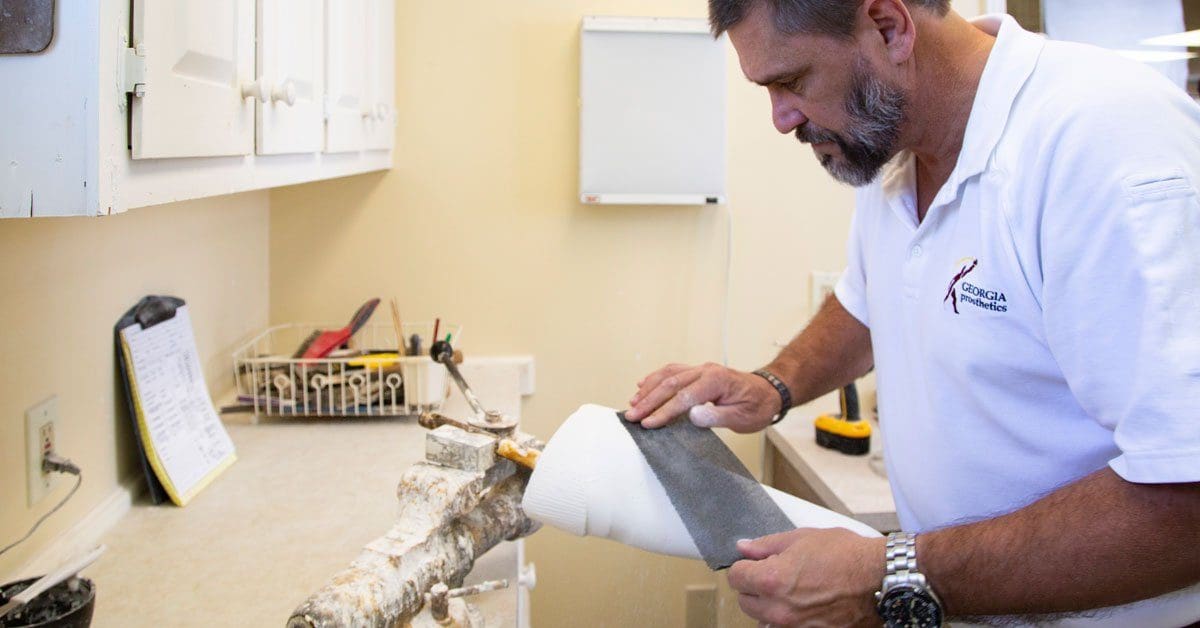
Many wonder how long a custom prosthetics process takes. We will uncover many factors that go into making a custom prosthesis, as well as what you can expect at Georgia Prosthetics during the process.
We’ll start out by saying the answer is largely driven by the number of appointments and how close together they can be compressed.
Additionally, here are a few factors to take into consideration during the custom prosthetics process:
1. Consultation/evaluation for custom prosthetics
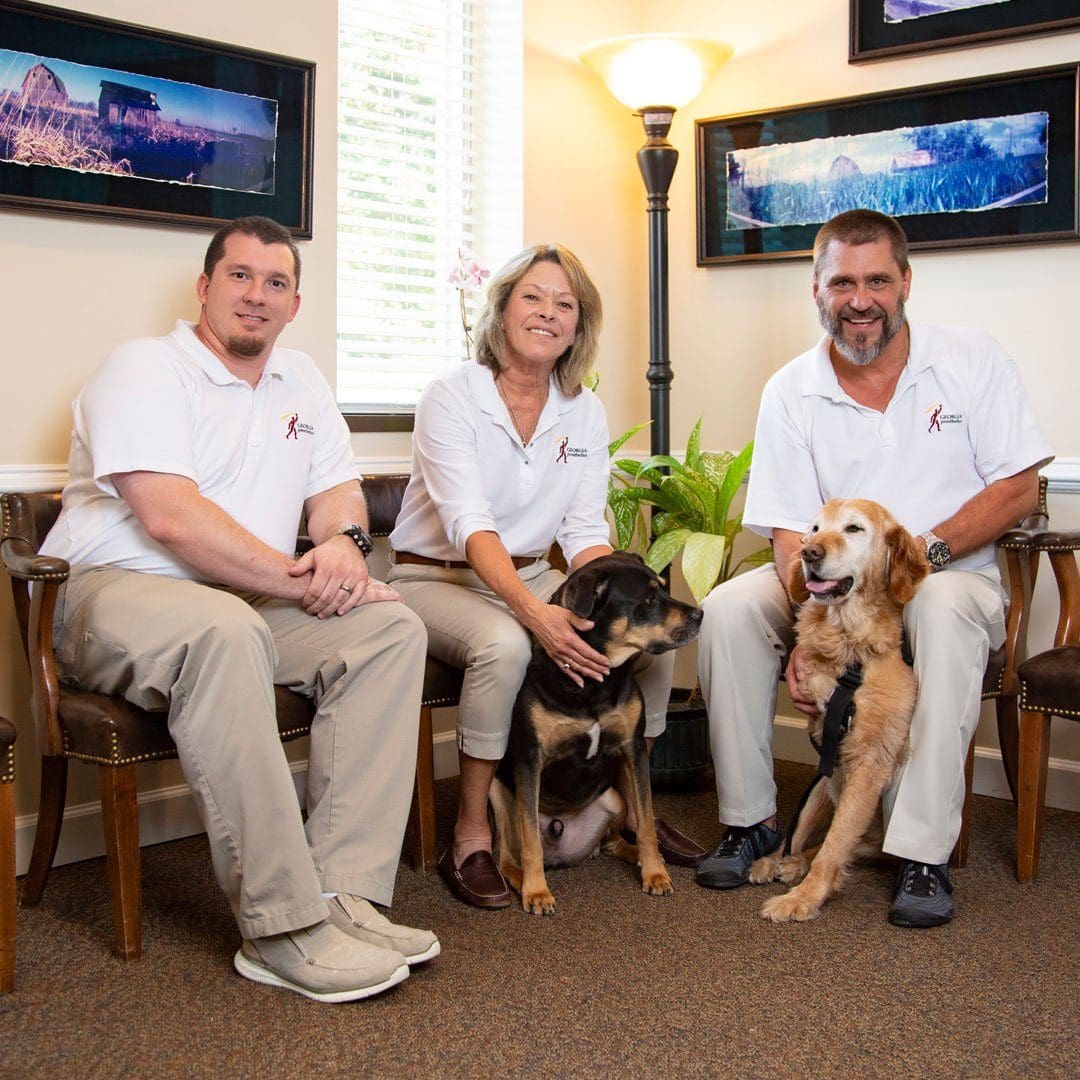
At this first appointment we get together with you at Georgia Prosthetics in Atlanta to discuss your needs.
-
If the evaluation is for the first prosthetic fitting after an amputation, often we start compression therapy here with shrinkers, or elastic stretchy socks to reduce swelling.
-
If the evaluation is for a replacement of an existing prosthesis, we discuss what the problems are, how long he/she has been using it, evaluate the wear, the fit, and any physiological changes that have occurred since it was fit.
We will determine if a new prosthesis is needed, or if a socket replacement is appropriate.
During this appointment we also decide on the design which may include socket suspension system, interface materials, and components such as knees, feet, hands, or elbows, depending on the type of prosthesis.
Once the comprehensive plan is established, we will generate the prescription and possibly documentation recommendations for the physician. Sometimes the amputee will need to take the paperwork to a face-to-face visit with the physician, and sometimes we can simply fax the documents to the physician’s office for the required signature.
The requirements of the payor or insurer determine what type of documentation we need to have in order to submit for authorization.
2. Insurance authorization for custom prosthetics
This step typically happens between the consultation and the next visit. Every insurance has different requirements.
Medicare requires that we have a signed prescription as well as documentation in the physician notes of a face-to-face visit that determines medical necessity for what is on the prescription.
Other insurance companies only require a prescription, but we have to submit it for approval, which sometimes only takes a couple days, but sometimes takes a couple weeks.
3. Custom prosthetics casting and measurements
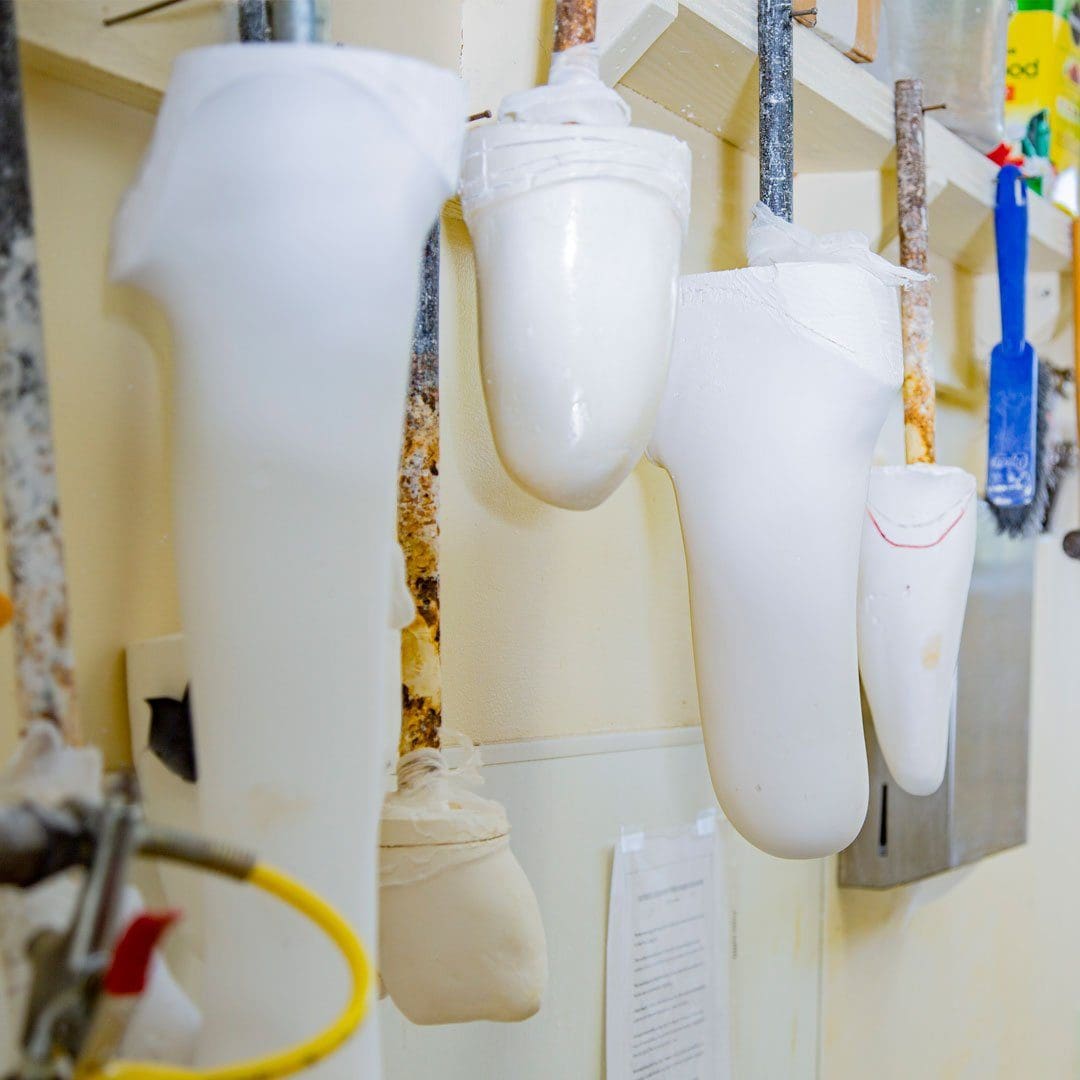
This step is when the physical process really begins. We take the measurements, castings, pictures, and/or tracings necessary to prepare for the initial fitting.
For transtibial (below knee) and upper extremity prostheses a cast is generally created, either from the limb or sometimes the existing prosthetic socket if it is fitting reasonably well.
A cast of the body part is actually quite inaccurate and can take a significant amount of work to convert it into a comfortable and working fit, so sometimes a mold of an existing prosthesis can help.
Either way, it is simply a way to get to a starting point for the fitting process.
Most of our transfemoral (above knee) are done by measurements only. For this, we use a fabrication facility with CAD/CAM capability to carve a model based on the measurements and then create a test socket from that.
4. Test the socket fitting for your custom prosthetics
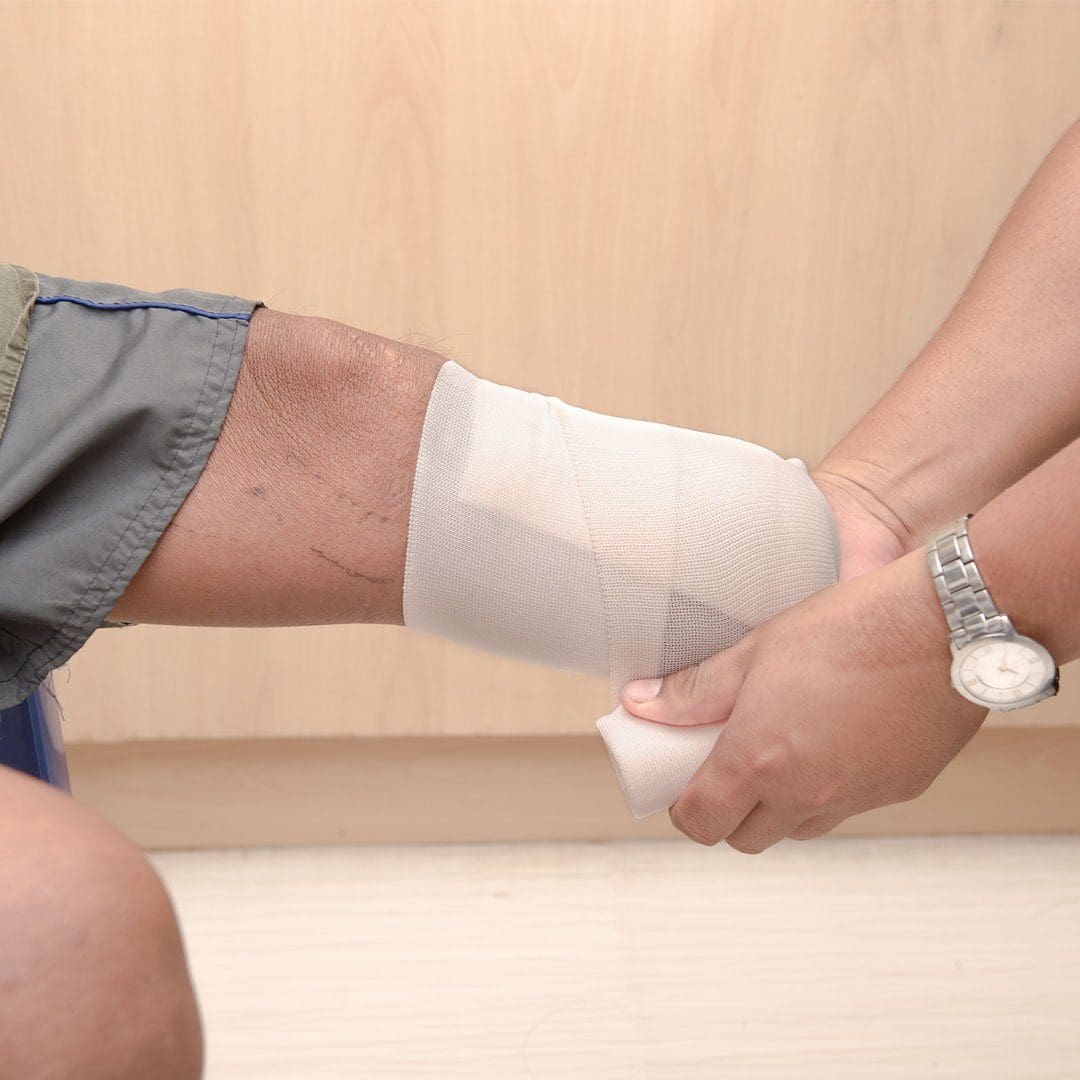
We are ready to test the socket fitting once we have either fabricated the test socket on site, or received the test socket from the CAD/CAM facility, and we have also received the other necessary parts to assemble the test prosthesis.
-
These parts would include any needed suspension parts and supplies, liners, knee, foot, hand, elbow, harness.
-
A static fitting is where the socket is simply slipped on the limb over any required interface materials (liner, sock…) and the fit is evaluated.
-
A dynamic fitting is when the test socket is attached to the components so the function can also be tested as well as fit evaluation under actual working circumstances (walking, weight bearing, or opening and closing the terminal device and suspension evaluation for upper extremity).
-
If for some reason the fitting, alignment, and overall function is not optimized at this fitting, another fitting may be required. Perhaps the fit is comfortable but it’s loose with too many socks. Another test socket may be required, and these we fabricate on site which saves a lot of time.
If the fit is good, we can proceed to definitive fabrication.
5. Delivery of your comfortable custom prosthetics
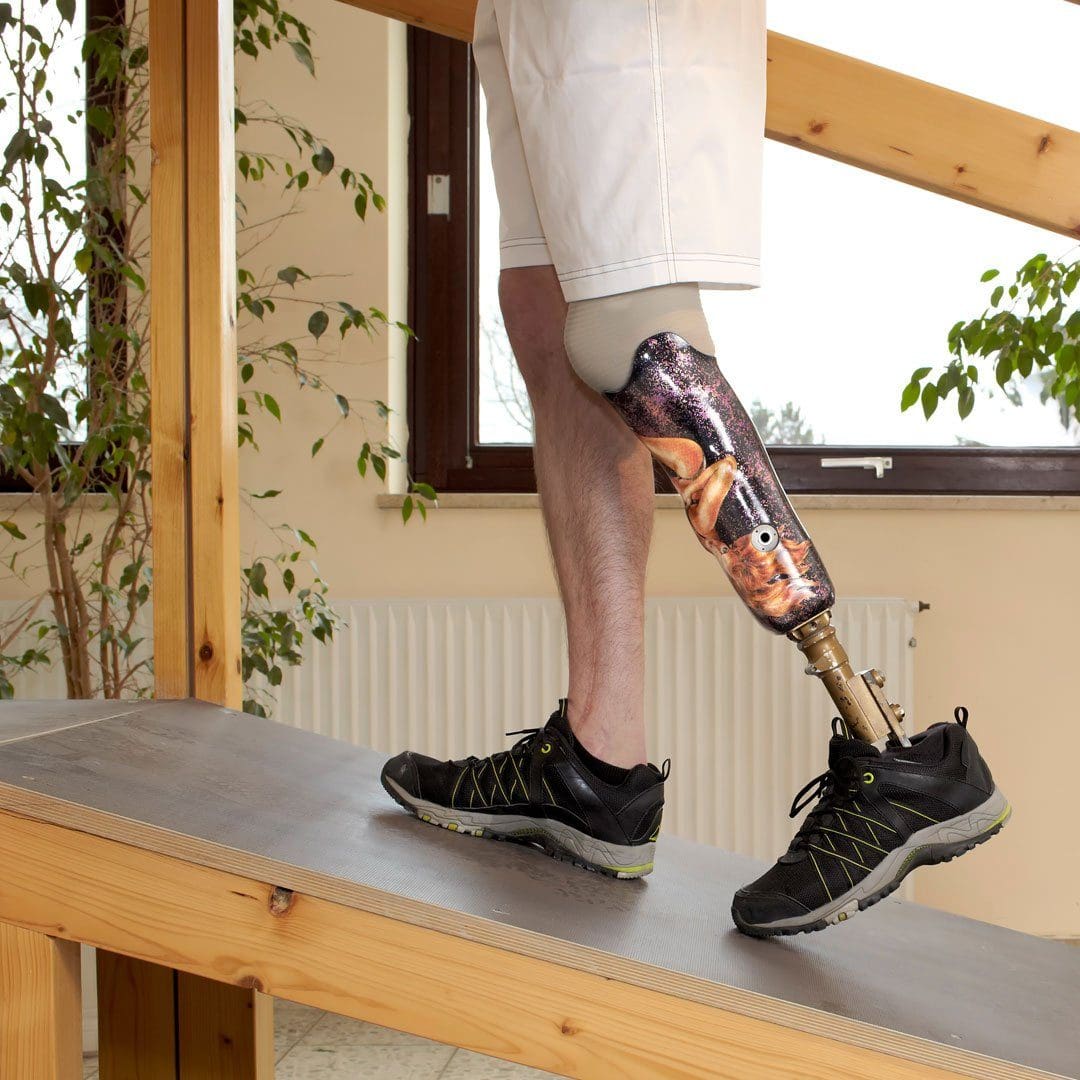
At this appointment the amputee takes possession of the prosthesis. Sometimes we go straight through the process and the definitive versions completed and that is what is delivered at this appointment.
Sometimes we will deliver a test socket that has been reinforced with bonding material and fiberglass wrap for a field trial. This is not a completed prosthesis and is not as strong as a completed product, but allows for the prosthesis and the fit to be tested in the real world, which often is very different than the perfect conditions in the office with flat tile floors and parallel bars.
Active and long-time users often need more refinements to the fitting prior to completion of the prosthesis, and this process allows us to do this better because the prosthesis is much more adjustable while in this condition compared to when it is fully completed.
More details about the steps to get custom prosthetics at our Atlanta prosthetics office
These are the steps that must be completed at our Atlanta prosthetics office to ensure as successful a fitting prosthesis as possible.
There are facilities that boast completing a prosthesis, start to finish, in one day. This means from casting and measurements to delivery; the consultation and insurance approval and document procurement must all happen first.
-
At Georgia Prosthetics, we have done it in a single day, but I do not recommend it because there is not enough time to thoroughly evaluate the quality of the fit and function.
-
Additionally, once the device is completed, the modifications and adjustment possibilities are more limited.
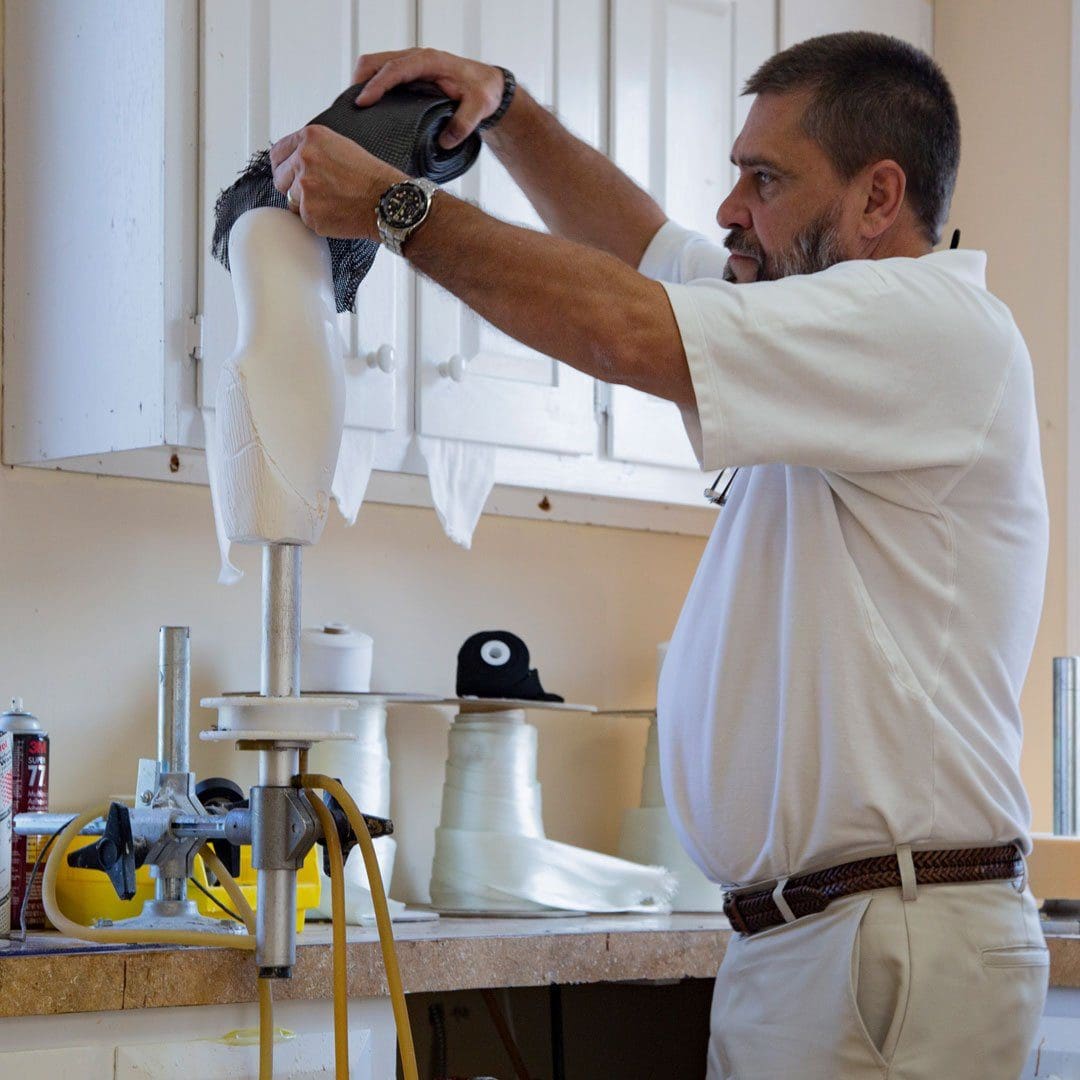
Typically it takes 2-4 weeks to complete the fitting and fabrication process once the measurements are taken, if everything goes smoothly.
-
The first fitting is usually 1-2 weeks after the measurements. The parts must be ordered and assembled, the cast must be poured, modified, and the socket fabricated.
-
Variables that can contribute to a longer process: difficulty with transportation and getting to the appointments, or challenges in procurement of material or supplies (while rare, it does happen), how long a field trial takes if undertaken, and the number of test sockets required to get to the desired final fit and comfort level.
We do have clients that come from out of town and out of state, and for them we plan in advance to perform an expedited fitting. We must still conduct an evaluation/consultation to determine the need, put together a plan, procure the needed documents, and obtain authorization from the payor to proceed.
Once this is done, we schedule for the process, usually for a week. We set appointments for each day, including scheduling anticipated fabrication time between appointments, so that the process can be completed expeditiously.
This also saves you, the client, money because typically you’ll be staying in a hotel if you do not have family members living locally, and we want to minimize that out-of-pocket cost as much as possible.
